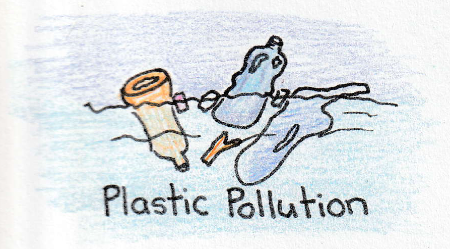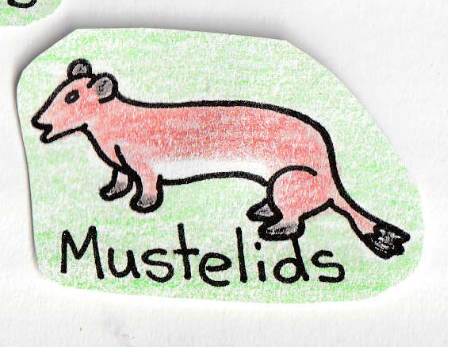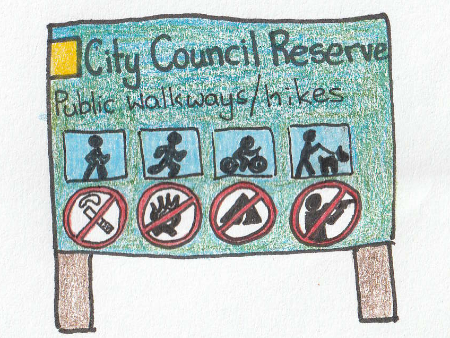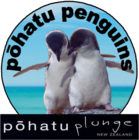Rehabilitated penguins
Children's University Day
|
Thursday the 1st of July was a great day for the Pohatu Penguins team. My cousin Ave and I were invited to participate in Te Mātāpuna Mātātahi | Children's University day at Lincoln University which aims to raise children aspirations for higher education and encourage lifelong learnings. This extra curriculum program has 2 components: “Passport to Learning for children aged 7 – 14 years” and a “Passport to Volunteering for young people aged 14-18 years”. The two of us went to share our story and what we do to protect wildlife and native forest in and around our working sheep farm on Banks Peninsula. Also with us on the day was Enzo, my 1 year old, third son and mascot. We were to work with four classes during the day, with mixed ages from 8 to 14 years old. This was a great opportunity to try out our new world building activity and educational tool that we had been working on over the last few months. The day was an early start with just over an hour drive from Akaroa to Lincoln. Luckily my little baby Enzo, being the third child, is used to being dragged along with me on fun adventures at any given moment. He sat happily in the back of the Pohatu Penguins tour bus, enjoying the spectacular views of Banks peninsula out the window while Ave navigated the winding, hilly roads with expertise. We made it to Lincoln with time to spare which turned out to be very lucky as we then proceeded to get ourselves hopelessly lost on campus. What a sight we must have been. Two grown women, ladened down by bags, laptop, folders and a healthy sized one year old on the hip. Enzo took great delight in the bumpy ride as we ran around the maze which is Lincoln University. Bumpety, bump we went with no sign of human life on the quiet campus until at last we stumbled across a friendly looking teenage girl wearing Pjs and slippers. She was a student of Lincoln university who very kindly directed us away from the dorm rooms and back to the actual university. Finally, we caught up with the group and with some help from a volunteer student organizer, we were escorted to our class room. It was about a ten second walk from where we had parked. After working up a sweat, we rehydrated and began setting up for the first group of students to arrive. The rest of the day went very smoothly. Each session began with a PowerPoint presentation of Pohatu/Flea Bay, explaining who we are and what we do to protect our wildlife, native forest and run an eco-friendly and sustainable business to provide the funding needed for our projects. This presentation was a perfect introduction to our world building activity. In groups of four, the students all picked a large poster of a landscape. There are four different options:
Each group was then invited to choose several native trees and plants to place on their landscape, along with several native species. These are small, hand drawn pictures cut out called asset tokens. The students really enjoyed being creative with their landscapes. There was a lot of excited chatter, ideas and planning going on in each group. It didn’t take long till each group was finished and sat, smiling with pride in front of their creations. But the smiles did not last long as Ave and I had an evil plan to sabotage their worlds. Using hidden tokens, we went around each landscape, infecting them with all sorts of environmental problems and potential issues such as; predators, gorse, plastic pollution, unmanaged rubbish, dogs off the leash and naughty humans braking rules. The reactions from the students were priceless. Yells and groans of disagreement and dismay. The drama of it all was wonderful and we couldn't help but enjoy it. Very rarely do adults get the chance to inflict the chaos in a classroom. But the smiles quickly came back when we revealed the solution tokens. A table full of different kinds of predator traps, hunters, DoC rangers, responsible farmers, signage of all kind from dog parks to fully protected reserves. Public toilets, recycling stations, fencing and many other tools and solutions to help. The students really seemed to enjoy finding the solutions and getting rid of the problems on their landscapes. Small pictures of stoats, hedgehogs and gorse were disregarded onto the floor for little Enzo to quickly grab and gather them up for us. The last part of the task was to name their project, tell us how they funded it and what were a few of the main steps they took to protect their environment. This was my favourite part of the day. It was wonderful to listen to all the kids’ ideas and strategies. The activity was a success and we made sure to thank each class for their input and for allowing us to use them as guinea pigs. I can't wait to try it out again, with a few minor improvements. Back we went to Akaroa, bubbling with excitement. Once home I changed out of my Pohatu uniform into my Akaroa karate club gee and Enzo and I went off to teach our kids karate class. What a day! |
-min-29.jpg) -min-28.jpg)     |
|
Ideally, we don’t want to handle our penguins at all. However, some of them need our help whether it be from an injury, illness or malnourishment. Pohatu Penguins steps in and gives these little birds a second chance at life! Most of our rehabilitated penguins are underweight or malnourished chicks. Typically, we find these chicks during our tours as we monitor the nesting sites. Why are the chicks malnourished/underweight?
What do you do in rehabilitation? This depends on the penguins needs and condition. Typically we will feed them 2-3 times a day depending on their weight and age. If they are old enough we will bring them for a swim in our “swim therapy pool”. Here, we introduce them to the water and determine if they are ready to be released. Injured or sick penguins will be sent to either a specialized penguin vet or dedicated specialists, Kristina and Thomas*, in Christchurch where they are assessed for future placement. Permanently injured penguins have the chance to live out their lives at the Antarctic Centre. *K&T Link: https://www.stuff.co.nz/environment/88518082/christchurch-couple-give-injured-rescue-penguins-the-full-pamper-treatment ParniaI spotted Parnia while kayaking; she was standing on the rocks looking extremely thin and weak. After getting back onto shore I quickly grabbed a bucket and went on to retrieve her – she gave little resistance to capture. Once I saw her up-close I realized that she had a deformed beak, probably why she had been so thin. (It’s very difficult for penguins to hunt efficiently with a crooked beak, most die.) I had never seen such a thin penguin and I expected her to die within the day, but still it was worth a shot to try and save her. Penguin band: P 41 087One year a starvation event happened right in the middle of the breeding season. When starvation occurs parents stop feeding their chicks to save themselves or only do so periodically. Chicks are then forced to leave (or fledge) the nest early in search of food. Unfortunately, chicks under 8 weeks old are not properly equipped to survive at sea and either starve or drown. In order to prevent early fledgings I fed the chicks while they remained in their burrows, hoping that the starvation event would end soon. Slowly but surely the parents started to return consistently feeding their youngsters and relieving me of my duties! Two years later P41 087 (we used to band our penguins) turned up in one of my breeding boxes. He was one of the largest, most beautiful penguins I had ever seen. P41 087 was evidence that my feedings, two years ago, had been a success. It warmed my heart to know that I helped save this little penguin and build him up for a healthy, successful life in the wild. He was my pride and joy. RoxyRoxy was handed in by the Fox II, a tourist sailing boat in Akaroa. She was extremely thin with a severe injury to her eye. Roxy looked like a recently fledged chick that seemed to have been hit by a boat. Her condition was very grim and I had my doubts about her survival.
However, to my delighted surprise she survived the first 24-hours, then the next and the next, and by day 3 she was on the road to recovery! Her eye injury, however, would be permanent and she would never be able to see from it again. Although, she was doing well in rehabilitation we knew that she wouldn’t stand a chance in the wild, thankfully, Roxy was also sent to the Antarctic Centre where she’ll live out a long and luxurious life! Shark baitThis is an all time favorite story that demonstrates incredible intelligence – intelligence you would never expect from a penguin. One night, while running an Evening Penguin Tour, we found a horribly injured penguin beside the track. I immediately took him into care and the next morning rushed him to Christchurch for an emergency veterinary assessment.. He had several shallow, flesh wounds and a lacerated leg. We suspected the culprit had been a shark. The vet stitched him up and I took him home to recover.. He spent a few weeks with us recovering and eating lots of fish – something he was quite happy to do through his moult*! Once his moult was complete we returned him to the sea and he happily shot off like a rocket! One year later, while running a tour, in the same spot on the tarck out in the open, we found a penguin near the track and out in the open we found a penguin that did move away from us as he should. He also did not attempt to bit and was very relaxed when I picked him up to examine him to find an explanation for this strange behaviour. He was in very good condition, but lame in one leg as Shark bait was when we released him. He proved beyond doubt who we was when I tried to feed him. He snapped and gulp the fish down gleefully and then looked for more, greedy as ever. As he was looking forward to another free easy loading molt we decided to indulged him and sent him on his way, fat and sleek once his feathers were grown in. Once again he shot off, instantly a wild penguin, but we did wonder, would he be back next year for another easy moult*? *Little Penguins moult – loose their old feathers and grow new ones – for two weeks every year. During the moult they cannot hunt and thus starve until it is complete. Yappy WiggleThis was the funniest penguin I’ve ever cared for! One day, while monitoring nesting sites I came across a burrow with one healthy chick and one very small runt. If one chick gets too far behind they simply die and the fouled nest can cause the healthy chick to become sick and die. The best option was to take the runty chick out, but then what to do with it? I decided I would simply throw it in the bushes. It’s very difficult to raise chicks that are less than 2 weeks old, especially if they are runts, but I thought I’d give it a go. Trying to feed such a young chick was not easy, but the little guy responded well and started to put on weight. Soon enough he turned into a healthy, respectable penguin. He became far too tame, however, and ran around like a puppy dog, wiggling his tail and begging for food with sharp, yapping noises. When it came time for him to leave he wasn’t exactly keen. On the first release he returned the next day yapping his way up the drive, begging for more fish. He had obviously not found any for himself. I allowed him to stay for a few days until I figured that we better try again; so, for a second time we released him back into the wild. He returned the very next day for more fish. I fed him once more and came up with a new idea, we’ll release him by kayak! So, in our third release, we took him by kayak to the entrance of Flea Bay and let him go. This seemed to be successful until the fifth day when we saw him hobbling towards the house. This time he was much weaker, thinner and a bit injured. I assumed he had hurt himself along the rocks and barnacles while exiting the sea. After our third try, we realized that Mr. Yappy Wiggle had imprinted on us and would not succeed in the wild. He now happily resides in the Antarctic Centre yapping and wiggling all over the place! Our Christmas Eve SagaBefore you read this you must understand: Yellow Eyed Penguins are the rarest penguin in the world and are extremely endangered. Every single one is precious. One Christmas Eve during a penguin tour we saw one of our Yellow Eyed Penguins drag itself ashore, obviously injured and bleeding. We caught the Yellow Eyed to gauge its injuries in which its feet were badly cut. It looked as though it kicked itself free from the jaws of life and escaped a near death shark attack. It needed stitching as soon as possible if it was to survive, but what vet would be open on Christmas Eve or Christmas Day? Talk about bad timing. I rang our closest vet in Little River and to my surprise he said to bring it straight over. This was 10.00pm on Christmas Eve. We arrived in Little River at 11.30pm, but the vet was nowhere to be seen. We sat there waiting and silently panicking over this precious penguin’s life. Until suddenly a vehicle pulls up with the vet and vet’s family! In order to successfully and painlessly stitch the penguin he needed to be put under. However, this can be dangerous if the penguin has a full stomach – something we weren’t sure about. We simply had to hope for the best and move forward with the procedure. The penguin did not fair well with the gas, he kept drifting in and out of conscious. Then, suddenly he started to heave and projectile vomit fish across the table, the floor and even the walls! Now, you can imagine our surprise, you can also imagine that it was quite unexpected and unfortunately we did not have time to react. So, like the table, the floor and the walls, we too were covered in fish vomit. Merry Christmas indeed! Thankfully after loosing its stomach contents our Yellow Eyed Penguin drifted into sleep and the vet was able to finish the job. With stitched and bandaged feet we placed our groggy penguin back into our vehicle. As we had to get the penguin home our vet and his family had to clean up the fish vomit – lucky them! We bid farewell and wished our Christmas heros a very Merry Christmas. After Christmas I sent the penguin to Christchurch to my wonderful friends and penguin rehab specialists, Christina and Thomas. Once it healed properly we released our Christmas penguin back into the wild. |
 Feeding chicks Feeding chicks Rehabilitated penguins in our garden going for a walk  Swim! (allow the penguins to oil up their feathers)  Releasing an adult.  Two chicks ready to go! (White flippered and Little Blue)  Trying to release Yappy Wiggle.  Still trying to release Yappy Wiggle...  Yellow Eyed Penguin with stitched foot.    |
|
These are just a few of the more memorable birds we have had in care. We rehabilitate many penguins, mostly Little Penguins, sometimes Yellow Eyed and occasionally a Crested Penguin. Most are sent off to sea successfully! If you too wish to help visit our Adopt a penguin page. |


Comments